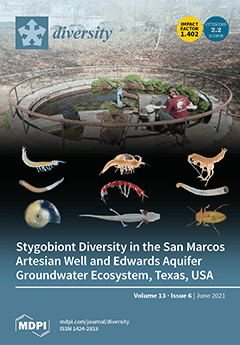The increasing demand for tropical timber from natural forests has reduced the population sizes of native species such as
Cedrela spp. because of their high economic value. To prevent the decline of population sizes of the species, all
Cedrela species have been incorporated
[...] Read more.
The increasing demand for tropical timber from natural forests has reduced the population sizes of native species such as
Cedrela spp. because of their high economic value. To prevent the decline of population sizes of the species, all
Cedrela species have been incorporated into Appendix II of the Convention on International Trade in Endangered Species of Wild Fauna and Flora (CITES). The study presents information about the modeled distribution of the genus
Cedrela in Peru that aims to identify potential habitat distribution of the genus, its availability in areas protected by national service of protected areas, and highlighted some areas because of their conservation relevance and the potential need for restoration. We modeled the distribution of the genus
Cedrela in Peru using 947 occurrence records that included 10 species (
C. odorata,
C. montana,
C. fissilis,
C. longipetiolulata,
C. angustifolia,
C. nebulosa,
C. kuelapensis,
C. saltensis,
C. weberbaueri, and
C. molinensis). We aim to identify areas environmentally suitable for the occurrence of
Cedrela that are legally protected by the National Service of Protected Areas (PAs) and those that are ideal for research and restoration projects. We used various environmental variables (19 bioclimatic variables, 3 topographic factors, 9 edaphic factors, solar radiation, and relative humidity) and the maximum entropy model (MaxEnt) to predict the probability of occurrence. We observed that 6.7% (86,916.2 km
2) of Peru presents a high distribution probability of occurrence of
Cedrela, distributed in 17 departments, with 4.4% (10,171.03 km
2) of the area protected by PAs mainly under the category of protection forests. Another 11.65% (21,345.16 km
2) of distribution covers areas highly prone to degradation, distributed mainly in the departments Ucayali, Loreto, and Madre de Dios, and needs immediate attention for its protection and restoration. We believe that the study will contribute significantly to conserve
Cedrela and other endangered species, as well as to promote the sustainable use and management of timber species as a whole.
Full article





